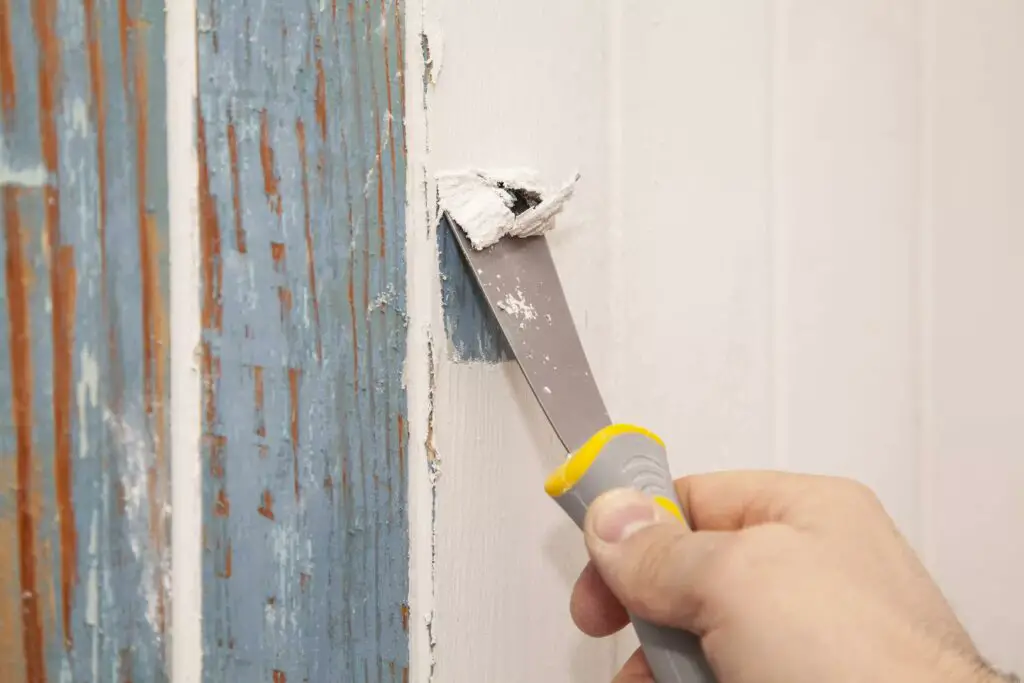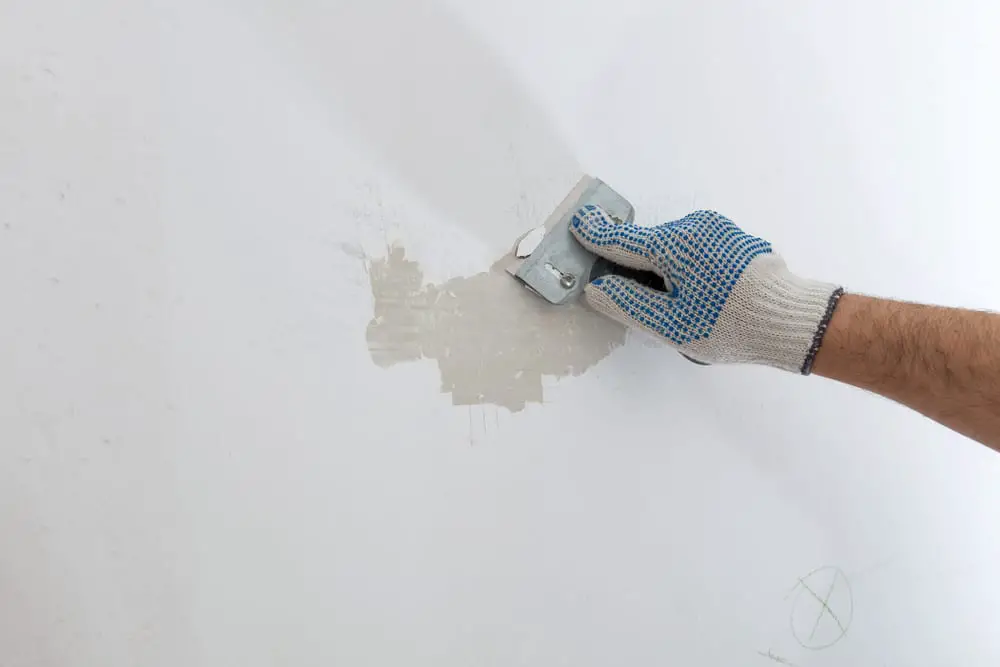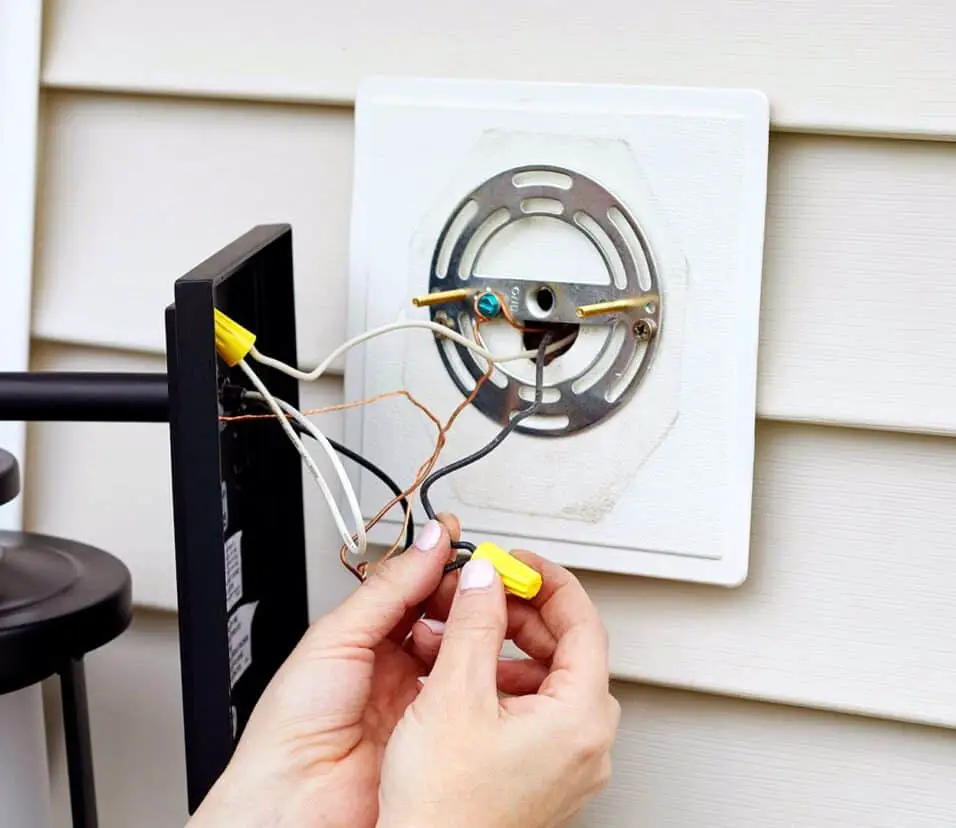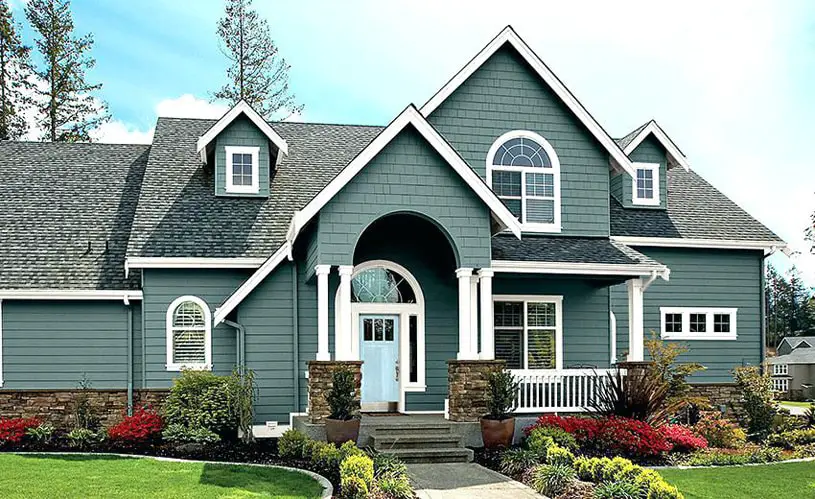Do I Need To Scrape Off Old Paint Exterior
Introduction
Do I Need To Scrape Off Old Paint Exterior: When it comes to painting the exterior of your home, one of the most important steps is preparing the surface. This often involves removing any old paint that may be peeling or flaking. But do you really need to scrape off all the old paint before applying a fresh coat? The answer depends on a few factors.
Firstly, it’s important to assess the condition of the existing paint. If the paint is in good condition, with no signs of peeling or flaking, you may be able to skip the scraping step. However, if the paint is chipping or coming off in large sections, it’s best to remove it completely. This will ensure a smooth and long-lasting finish for your new paint job.
Secondly, the type of paint you plan to use can also influence whether or not you need to scrape off the old paint exterior. If you’re using a latex-based paint, it can often adhere well to existing paint, even if it’s slightly peeling. Oil-based paints have a harder time sticking to surfaces with poor adhesion.
Lastly, the age of the existing paint can also play a role in determining whether or not scraping is necessary. If the paint is relatively new and in good condition, it may be sufficient to simply clean and prime the surface before applying the new paint. However, if the paint is old and has multiple layers, it’s best to remove it completely to ensure a smooth and even finish.

Do you need to remove old exterior paint before painting?
No, you only need to scrape off old paint not properly adhering. Not all old paint. Using a hand or powered tool, remove all this paint off of surface, before going any further.
When it comes to painting the exterior of your home, one of the most common questions that arises is whether or not you need to remove the old paint before applying a new coat. The answer to this question depends on a few factors, including the condition of the existing paint, the type of paint you plan to use, and your desired end result.
In some cases, it may be necessary to remove the old paint before painting. If the existing paint is peeling, cracking, or chipping, it is important to remove it before applying a new coat. This is because the new paint will not adhere properly to a surface that is in poor condition. Additionally, if the old paint contains lead, it is essential to remove it safely to avoid any health risks.
If you decide to paint over the old paint
On the other hand, there are situations where you may not need to remove the old paint. If the existing paint is in good condition and properly adhered to the surface, you can often paint over it without any issues.
However, even if you decide to paint over the old paint, there are still some important steps you should take. First, you should thoroughly clean the surface to remove any dirt, dust, or debris. This will ensure that the new paint adheres properly. Additionally, you may need to apply a primer before painting to ensure good adhesion and coverage.
In conclusion, whether or not you need to remove old exterior paint before painting depends on the condition of the existing paint and your desired end result. If the old paint is in poor condition or contains lead, it is important to remove it before painting. However, if the existing paint is in good condition, you can often paint over it with proper preparation. Ultimately, the goal is to create a smooth, long-lasting finish that enhances the appearance of your home.
Can you paint over old exterior paint?
If the existing paint is of the same type and the wall is in good condition, you can go ahead and paint without sanding. However, when it comes to wood, you may have to sand for proper adhesion. However, you can also skip the sanding process and make do with a primer.
Yes, it is possible to paint over old exterior paint. However, there are a few factors to consider before doing so. First, you need to assess the condition of the existing paint. If it is peeling, cracking, or chipping, it is important to remove it before applying a new coat of paint.
Another factor to consider is the type of paint that was previously used.
If the old paint is oil-based, it is recommended to use a primer before applying a new coat of paint. This will help the new paint adhere better to the surface. On the other hand, if the old paint is latex-based, you may be able to skip the primer step.
Before painting over old exterior paint, it is also important to clean the surface thoroughly. This will ensure that the new paint adheres properly and lasts longer. Use a mild detergent and water to wash away any dirt, grime, or mildew. Rinse the surface well and allow it to dry completely before applying the new paint.
Once the surface is clean and dry, you can begin painting. Apply the paint evenly using a brush or roller, following the manufacturer’s instructions for drying time and number of coats.
While it is possible to paint over old exterior paint, it is important to assess the condition of the existing paint, clean the surface thoroughly, and choose the right type of paint for the job. By taking these steps, you can achieve a professional-looking finish and extend the life of your exterior paint job.
Do I need to scrape old paint?
Using a hand or powered tool, remove all this paint off of surface, before going any further. Good way to check paint properly laying down, adhering is tapping it with point on end of painter’s 5 way tool.
When it comes to painting a surface, one of the most common questions that arises is whether or not it is necessary to scrape off old paint before applying a new coat. The answer to this question depends on a few factors, including the condition of the existing paint, the type of surface being painted, and the desired outcome of the project.
This is because old paint can become cracked, chipped, or peeling over time, which can affect the adhesion of the new paint. By removing the old paint, you can ensure a smooth and even surface for the new coat to adhere to, resulting in a better overall finish.
However, there are some situations where scraping off old paint may not be necessary.
If the existing paint is in good condition, with no signs of cracking or peeling, and the surface is clean and free of dirt and debris, you may be able to skip the scraping step. In these cases, it is still important to thoroughly clean the surface before painting to ensure proper adhesion.
Another factor to consider is the type of surface being painted. Different surfaces may require different preparation methods. On the other hand, if you are painting over a porous surface, such as bare wood or drywall, scraping off old paint may be less necessary.
Ultimately, the decision to scrape off old paint before painting will depend on the specific circumstances of your project. It is always a good idea to assess the condition of the existing paint, consider the type of surface being painted, and consult with a professional if you are unsure. Taking the time to properly prepare the surface before painting can help ensure a long-lasting and professional-looking finish.
Can you paint over old paint without sanding?
If sanding is your least-favorite step, then it’s certainly possible to paint furniture without sanding. But to do so with favorite results, you should clean the wood’s surface AND use a high-quality primer and/or paint. You can also use liquid paint remover to scrape off the old paint.
Yes, it is possible to paint over old paint without sanding. This method is known as “”painting over”” or “”painting without sanding.”” It is a convenient option for those who want to save time and effort in preparing the surface for a new coat of paint.
One of the main advantages of painting over old paint without sanding is that it eliminates the need for extensive surface preparation. Sanding can be a time-consuming and messy process, especially if the old paint is in good condition. By skipping the sanding step, you can save valuable time and energy.
However, it is important to note that painting over old paint without sanding may not be suitable for all situations. If the old paint is in poor condition, it is advisable to remove it completely before applying a new coat.
Before painting over old paint without sanding, it is important to clean the surface thoroughly. This will help ensure proper adhesion of the new paint. Use a mild detergent and water solution to remove any dirt, grease, or grime. Rinse the surface well and allow it to dry completely before proceeding with the painting process.
Additionally, it is recommended to use a primer before applying the new coat of paint. A primer helps improve adhesion and provides a smooth surface for the paint to adhere to. Choose a primer that is suitable for the type of surface you are painting, such as wood, metal, or drywall.
What is the reason to remove the old paint?
Correcting a poor paint job: Stripping paint and starting over is often the only way to correct a poor paint job. It might be time to have a part stripped if it’s chipping prematurely, has uneven coloring or thickness, has built-up layers of paint or was painted with the wrong type of paint or in the wrong color.
There are several reasons why it may be necessary to remove old paint from a surface. Whether you are repainting a room in your home or restoring an old piece of furniture, removing the old paint is an important step in achieving a smooth and professional-looking finish.
One of the main reasons to remove old paint is to ensure proper adhesion of the new paint. Over time, paint can become worn, chipped, or discolored, making it difficult for new paint to adhere properly. By removing the old paint, you create a clean and smooth surface that allows the new paint to bond effectively. This helps to prevent peeling, cracking, or flaking of the new paint in the future.
Removing old paint can also help to identify and address any underlying issues or damage. Sometimes, old paint can hide cracks, dents, or other imperfections in the surface. By removing the old paint, you can thoroughly inspect the surface and make any necessary repairs or preparations before applying the new paint. This ensures that the surface is in good condition and ready to receive the new paint, resulting in a longer-lasting and more durable finish.
Lastly, removing old paint can be necessary for health and safety reasons.
Some old paints may contain lead or other harmful substances that can pose a risk to your health, especially if they are disturbed or released into the air during the painting process. By removing the old paint, you can minimize the exposure to these hazardous materials and create a safer environment for yourself and others.
This involves using a scraper tool to physically remove the old paint from the surface. It is important to use a scraper with a sharp blade to effectively scrape off the paint without damaging the underlying surface.
Before starting the scraping process, it is advisable to prepare the area by covering nearby objects and plants to protect them from paint chips and dust. It is also recommended to wear protective gear such as gloves, goggles, and a dust mask to prevent any potential health hazards.
Once the scraping is complete, it is important to properly dispose of the old paint chips and debris. Gather them in a bag or container and dispose of them according to local laws. Clean and prepare the surface before painting after removing the previous paint.
Are there any specific tools or products that should be used for scraping off old paint from the exterior?
When it comes to scraping off old paint from the exterior, using the right tools and products is crucial for achieving the best results. The specific tools and products you should use will depend on the type of surface you are working on and the condition of the old paint. However, there are some general recommendations that can help guide you in the right direction.
First and foremost, a good quality paint scraper is essential for effectively removing old paint from the exterior. Look for a scraper with a sharp blade and a comfortable handle that allows for easy maneuverability. A scraper with multiple blade options can be particularly useful for tackling different types of surfaces and paint layers.
In addition to a paint scraper, you may also need a heat gun or a chemical paint stripper to assist in the removal process. Chemical paint strippers can also be effective in loosening the old paint, but it is important to follow the manufacturer’s instructions and take appropriate safety precautions when using these products.
How important is it to remove all traces of old paint before applying a new coat on the exterior?
Removing all traces of old paint before applying a new coat on the exterior is extremely important for several reasons. Firstly, old paint that is peeling, cracking, or flaking can prevent the new paint from adhering properly to the surface. This can result in a patchy and uneven finish, which not only looks unattractive but also reduces the longevity of the new paint job.
Secondly, old paint may contain contaminants such as dirt, dust, or mold, which can affect the quality and durability of the new paint. By removing the old paint, you ensure a clean and smooth surface for the new paint to adhere to, resulting in a more professional and long-lasting finish.
Lastly, removing old paint allows you to assess the condition of the underlying surface. If there’s damage or deterioration, fix it before painting. By removing the old paint, you may spot areas that need repairs or preparation, protecting the new paint work.
Are there any safety precautions or measures that should be taken when scraping off old paint from the exterior?
When it comes to scraping off old paint from the exterior, it is crucial to prioritize safety. The process of removing old paint can release harmful substances such as lead dust or fumes, which can pose serious health risks if inhaled or ingested. Therefore, it is essential to take certain safety precautions to protect yourself and others.
First and foremost, it is highly recommended to wear protective gear, including a respirator or mask, safety goggles, and gloves. These items will help prevent the inhalation of toxic particles and protect your eyes and skin from potential irritants. Additionally, it is advisable to work in a well-ventilated area to minimize exposure to fumes.
Furthermore, it is important to properly dispose of the scraped-off paint chips and debris. Collect the waste in a sealed bag or container to prevent any accidental release of harmful substances. It is also crucial to follow local regulations and guidelines for the disposal of hazardous materials.
Is it possible to paint over old paint on the exterior without scraping it off?
While it may be tempting to skip the labor-intensive process of scraping off old paint, it is generally not recommended to paint over it without proper preparation. Painting over old paint without scraping it off can lead to a variety of issues that can compromise the longevity and appearance of the new paint job.
Firstly, old paint may be peeling or flaking, which can cause the new paint to also peel or flake off over time. This can result in an uneven and unsightly finish. Additionally, painting over old paint without removing it can prevent the new paint from properly adhering to the surface, leading to poor adhesion and premature paint failure.
Secondly, old paint may have accumulated dirt, grime, or other contaminants over time. Painting over these substances can result in a less durable and less attractive paint job. It is important to properly clean and prepare the surface before applying a new coat of paint to ensure optimal adhesion and a smooth, long-lasting finish.

Conclusion
This is because old paint can become cracked, chipped, or peeling over time, which can affect the adhesion and durability of the new paint. By removing the old paint, you can ensure a smooth and even surface for the new paint to adhere to, resulting in a longer-lasting and more professional-looking finish.
By addressing these issues before painting, you can prevent further damage and ensure that the new paint job will be able to withstand the elements and last for years to come. However, there may be some instances where scraping off all of the old paint is not necessary. If the old paint is still in good condition, with no signs of cracking or peeling, it may be possible to simply sand the surface lightly and apply a new coat of paint. A “”scuff and paint”” method can save time over full paint removal.
Ultimately, the decision to scrape off old paint or not will depend on the condition of the existing paint, the desired outcome, and personal preference. Professional advice or paint product manufacturer instructions are always suggested. By taking the time to properly prepare the surface, you can ensure a successful and long-lasting paint job for your exterior surfaces.








